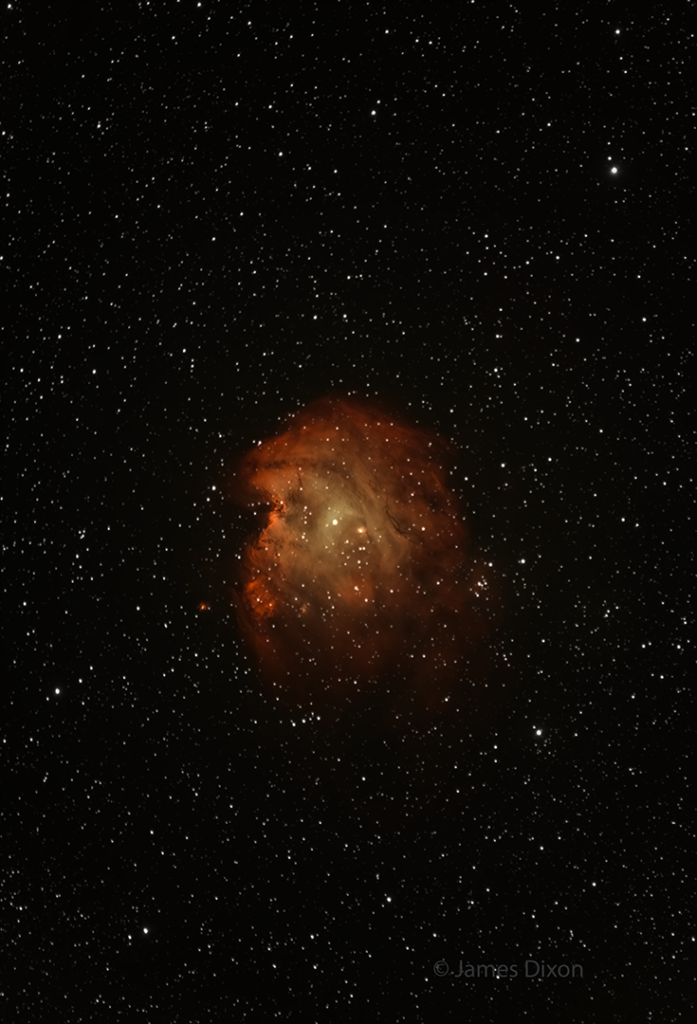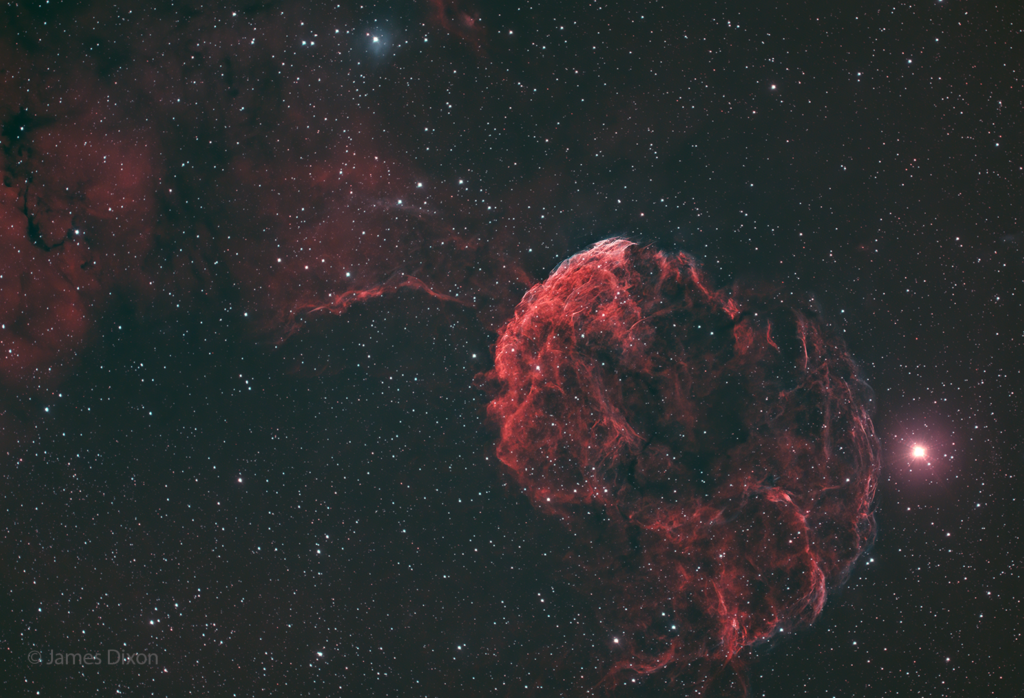
NGC 2174 is an emission nebula in the constellation of Orion. The belt of Orion points (to the left) toward it at about their width. I have it upside down here to make it a little more obvious where the nickname came from.

NGC 2174 is an emission nebula in the constellation of Orion. The belt of Orion points (to the left) toward it at about their width. I have it upside down here to make it a little more obvious where the nickname came from.
Saturday night was a good night at the River Ridge Observatory. Three CAAS members were in attendance. We all experienced technical difficulties but that happens sometimes.

My first object of the evening was the IC 405, or the Flaming Star Nebula. I used the Hyperstar adapter on my 11″ SCT Elf and a dual narrowband IDAS NBZ UHS filter (I have to think it through every time I type out the name) that lets Hydrogen Alpha and Oxygen III through and not much else. There was little OIII to let through in this object. It is believed that the proper motion of the central star (a little left of center here) can be traced back to the Orion Nebula.

Next and last, I shot NGC 2359 aka Thor’s Helmet in Canis Major. Like the Bubble Nebula and the Dolphin Head Nebula that I shot recently, this is a bubble being blown by a very hot Wolf-Rayet star which you can see inside the main part of the helmet. If you wonder how it came by it’s nickname, tilt your head to the right and you’ll say “oh yeah”. This nebula has plenty of OIII and the wings on the helmet show a little red from H-alpha. This image was shot after the Moon had risen but was more than 90 degrees away and turned out okay. This was just an hour’s worth of 3 minute subs and is a little small for the Hyperstar but I didn’t feel like swapping things out.
It was another good night at the River Ridge Observatory. There were five of us there imaging. It was much warmer and calmer than the night before so not having all those layers on was pleasant. My target for the night was the Jellyfish Nebula in Gemini.

This is a supernova remnant, similar to the better known Veil Nebula and Crab Nebula. The nebula is almost a degree wide or almost twice the apparent size of the Moon. It of course, is in the lower right quadrant. In the upper left quadrant is molecular gas, glowing in the Hydrogen alpha part of the spectrum and not related to the supernova remnant.
If you notice, near the top on the left is a star with a hint of blue nebulosity. The filter I used wouldn’t be any good at picking up reflection nebula and the star chart program does not show anything there but that is what it looks like.
This was three hours of data from five minute subs, taken with my 11″ SCT at f/1.9 using my NBZ UHS dual narrowband filter.